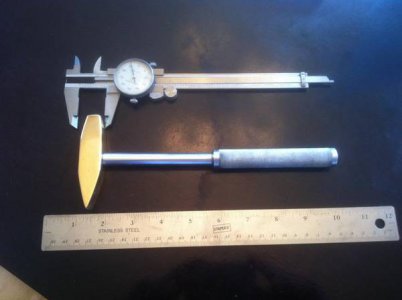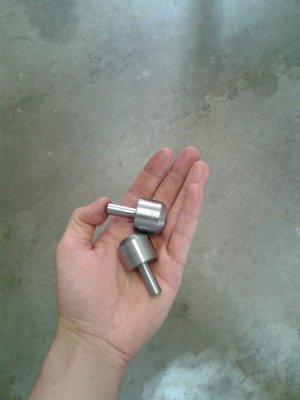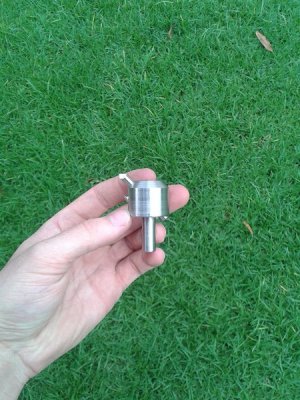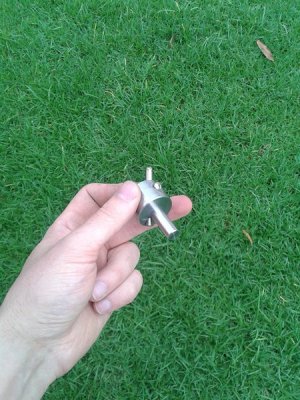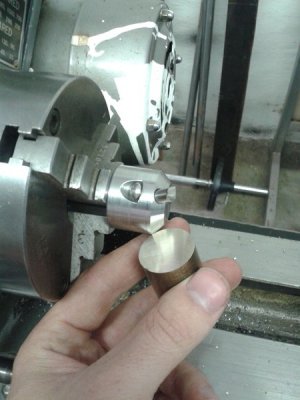- Joined
- Sep 18, 2013
- Messages
- 35
Okay, I've just been doing some work on the above hammer.
Firstly I didn't have any square stock in brass, so I set about taking a piece of hex stock to size. The offcuts will be saved for the furnace.
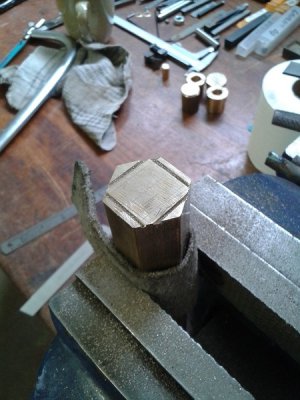
After I had cut it to rough dimensions I started filing the surfaces, a second cut pillar file worked well. Although I found it relatively easy to flatten the surface down the long way of the workpiece I had great difficulty getting it flat across the short way. I can only get it slightly rounded, not actually flat. Here's the workpiece in a four jaw chuck, about to be put on the lathe.
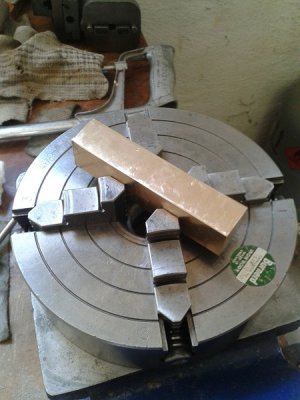
After starting to turn it seems I was quite off on some of the surfaces, the one pictured here being the most out.
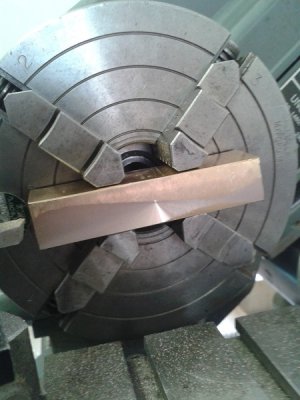
I squared it up nicely, should be able to do some more work on it soon.
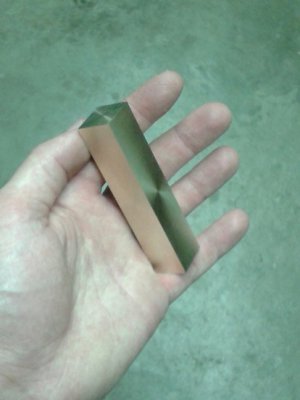
I am going to have to wait to get the Southbend workshop projects book, I have someone coming over from the UK soon who is going to bring my books over but unfortunately I just missed a copy of the Southbend book! Oh well, next time. I've also picked up some stainless square stock for making dial indicator clamps, I still need a few more materials for those though.
Carlos.
Firstly I didn't have any square stock in brass, so I set about taking a piece of hex stock to size. The offcuts will be saved for the furnace.

After I had cut it to rough dimensions I started filing the surfaces, a second cut pillar file worked well. Although I found it relatively easy to flatten the surface down the long way of the workpiece I had great difficulty getting it flat across the short way. I can only get it slightly rounded, not actually flat. Here's the workpiece in a four jaw chuck, about to be put on the lathe.

After starting to turn it seems I was quite off on some of the surfaces, the one pictured here being the most out.

I squared it up nicely, should be able to do some more work on it soon.

I am going to have to wait to get the Southbend workshop projects book, I have someone coming over from the UK soon who is going to bring my books over but unfortunately I just missed a copy of the Southbend book! Oh well, next time. I've also picked up some stainless square stock for making dial indicator clamps, I still need a few more materials for those though.
Carlos.

